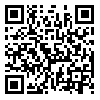Volume 10, Issue 3 (2008)
JAST 2008, 10(3): 253-259 |
Back to browse issues page
Download citation:
BibTeX | RIS | EndNote | Medlars | ProCite | Reference Manager | RefWorks
Send citation to:



BibTeX | RIS | EndNote | Medlars | ProCite | Reference Manager | RefWorks
Send citation to:
Mohebby B. Application of ATR Infrared Spectroscopy in Wood
Acetylation. JAST 2008; 10 (3) :253-259
URL: http://jast.modares.ac.ir/article-23-4042-en.html
URL: http://jast.modares.ac.ir/article-23-4042-en.html
Department of Wood and Paper Science, Faculty of Natural Resources and Marine Science, Tarbiat Modares
University, P. O. Box: 46414-356, Noor, Islamic Republic of Iran
Abstract: (6152 Views)
Acetylation is a chemical modification of wood to enhance its properties. IR-spectroscopy is a useful technique for proofing chemical bondings in wood and the At-tenuated Total Reflection (ATR) Infrared Spectroscopy technique was applied as an eas-ier technique over other IR-spectroscopies. In this research, different degrees of acetyla-tion, weight percentage gains (WPGs) in beech and pine mini-stakes were achieved by us-ing acetic anhydride. Acetylated samples were analyzed by applying an Attenuated Total Reflection (ATR) Infrared Spectroscopy technique. Comparison of the acetylated samples with non-acetylated woods showed that hydroxyl groups (O-H) were diminished at wave numbers of about 3,354-3,328 cm-1 due to the substitution of hydrophobic acetyl groups in cell wall polymers. A strong peak appeared at wave numbers of about 1,733-1,728 cm-1 in beech and 1,737-1,728 cm-1 in pine due to the carbonyl (C=O) stretching of acetyl groups. The magnitude of the bands increased with raising the weight percentage gains (WPGs). The methyl deformation of the acetyl groups induced at wave number 1369 cm-1 caused by the stretching of C-H in polysaccharides. There was also a clear increase in the magni-tude of the wave numbers at about 1234-1226 cm-1 in beech and 1236-1226 cm-1 in pine due to the stretching of C-O and carbonyl deformation in the ester bonds during the ace-tylation of lignin.
Keywords: Acetylation, Acetyl groups, Attenuated total reflection, Infrared Spectroscopy, Beech, IR spectroscopy
Subject:
Forestry
Received: 2010/01/28 | Accepted: 2010/01/28 | Published: 2010/01/28
Received: 2010/01/28 | Accepted: 2010/01/28 | Published: 2010/01/28
| Rights and permissions | |
 |
This work is licensed under a Creative Commons Attribution-NonCommercial 4.0 International License. |







